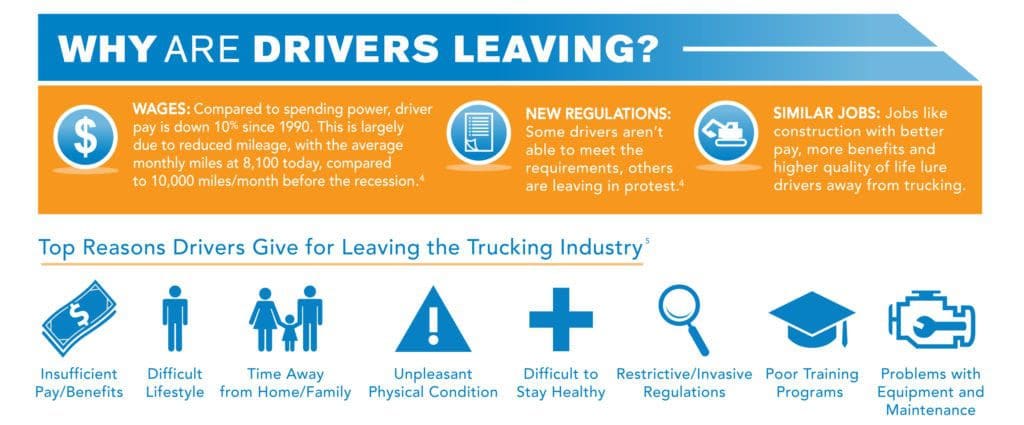The American Trucking Association (ATA) recently released report indicates that the shortage of truck drivers is reaching unsustainable levels. The report indicates that the shortage of truck drivers could increase by 26,000 to reach a mind boggling high of over 70,000 by end 2018. This is all still cheerful in light of the final figure – a shortage of 175,000 drivers by 2024.
To meet this shortfall, it is estimated that around 89,000 new drivers will have to be hired each year for the next decade. A large percentage (45%) of these new drivers will be required merely to meet the shortfall created due to current drivers retiring; 33% will be required just to keep up with an increase in demand. With the supply of qualified drivers at this considerable low, driver salaries are expected to keep rising as an incentive to retain existing drivers, with many transport companies looking into innovative measures to entice old drivers to stay and new drivers to join the business.
In an informal survey taken during the Idealease/NPTC safety seminars held this year, 33% of the attendees indicated they need to hire one or more drivers.
The following are some tips for consideration to retain the good drivers you have:
- Review for your company policies and procedures for honesty with your drivers. Make sure the policies are forthright and achievable by your drivers. The number one reason a driver leaves the employment of a motor carrier is that the driver feels that the company has been dishonest with them.
- Drivers need to be recognized as an asset to the company and a valued part of the company in all aspects of their operations and performance.
- Involve drivers in the operations of your company on a regular basis, i.e.: equipment selection, accident review committees, policy and procedure issues, customer service relationships etc. Develop a relationship with your drivers, know who they are, show a genuine concern for their welfare and longevity with the company. This relationship should be consistent from the top management and ownership down.
- Review your pay and benefit programs to make sure they are competitive in the industry.
- Keep your vehicle maintained with a systematic maintenance and inspection program that insures a safe operating unit for your driver.
- Provide ongoing training. It has been proven that drivers that receive training and are elevated in position are less likely to leave your company.
- Strictly adhere to your driver hiring and selection standards. Qualified, experienced drivers to not want to be associated with a company that hires substandard drivers.
- Provide a structured and comprehensive new driver orientation-training program. Drivers need to know the policies and procedures of the company prior to being placed into service. If the driver is informed of polices-procedures after being placed into service they will likely terminate, as they do not know what other polices-procedures they will be required to comply with in their job later on.
- Recognize drivers for their achievements and performance. Safe driving awards, longevity awards, customer service, etc. Provide the drivers with recognition that they cannot get anywhere else. The recognition should be personalized to the driver. Coats with their name and achievement, decals for the side of their units with their first name and achievement, plaques, etc. All driver recognition should take place with other drivers as their peers in attendance.
- When a driver terminates employment, conduct an exit interview. This can be done in person or send a self addressed stamped envelope to the driver with a written evaluation to be completed. Try to determine what the actual reason for the driver leaving your employment.
First published in the Idealease Safety Bulletin


